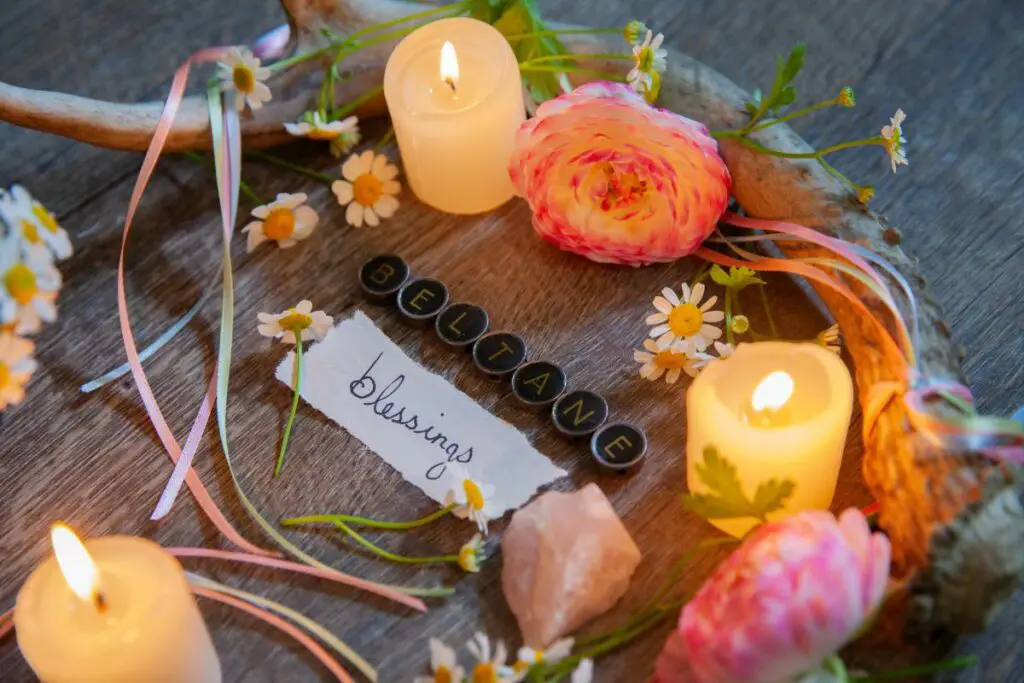Ancestor altars are a crucial aspect of connecting with and honoring one’s ancestors. These sacred spaces serve as a bridge between the living and the deceased, enabling individuals to tap into the wisdom, guidance, and support of those who have come before them.
However, for those who have created an ancestor altar in their home, they might wonder how to know if their efforts are working or if their ancestors are truly present.
Recognizing the signs of a functional ancestor altar can help reassure individuals that their practices are effective and that they are successfully strengthening their bonds with the spiritual realm.
Understanding Ancestor Altars
Ancestor altars serve as a connection between the living and the deceased members of one’s family. By creating a dedicated space to honor ancestors, individuals can strengthen their bond with those who have passed away and receive guidance or support in times of need.
Purpose of Ancestor Altars
Ancestor altars provide a physical space in the home for spiritual communication with deceased family members. They offer a way to show respect and remembrance for ancestors, fostering a sense of closeness with past generations.
This connection can serve both personal and spiritual purposes, such as seeking guidance or strength in difficult times from one’s ancestors.

Key Components of Ancestor Altars
There are several key elements that typically make up an ancestor altar. While the specific components may vary based on individual preferences and cultural considerations, some common elements include:
- Photographs: Images of ancestors are used to represent their presence on the altar. These pictures can range from individual to group portraits, showcasing family members who have passed away.
- Offerings: Items that hold personal significance or were enjoyed by the ancestors in their lifetime can be placed on the altar.
- Offerings can include food, drink, or personal belongings, serving as a sign of respect and remembrance.
- Candles: Lighting candles on the altar signifies honoring the ancestors and inviting their presence.
- It can also facilitate communication and help create a calming atmosphere for reflection and meditation.
- Incense or smudging: Burning incense or smudging the space with sage or Palo Santo can help cleanse and purify the area, creating a welcoming environment for ancestral connection.
- Representative items: Any items that are connected to the ancestor’s culture, traditions, or personal interests can be included in the altar.
- These items create a sense of familiarity and offer a more personalized space for ancestral communication.
Building an effective ancestor altar requires careful consideration of these key components and a genuine desire to connect with one’s ancestral history.
Through regular engagement and offerings, individuals can attune to the presence of their ancestors and deepen their understanding of their family lineage.
Signs Your Ancestor Altar Is Working
Knowing whether your ancestor altar is working can be a valuable insight during your spiritual journey. This section will discuss some of the key signs that indicate your ancestor altar is functioning as intended.
The following sub-sections will delve into visions and dreams, physical manifestations, and synchronicities and messages.
Visions and Dreams
One of the most common ways your ancestors may communicate with you is through visions and dreams.
If you are experiencing vivid dreams or visions that involve your ancestors or symbols connected to them, this could be a sign that your altar is working.
Pay attention to these experiences, as they can provide valuable insights and guidance from your ancestors.
Physical Manifestations
Physical manifestations are another sign that your ancestor altar is working.
You might notice objects on your altar moving or being rearranged, even when no one has touched them.
Other signs include candles flickering intensely, specific scents that are associated with your ancestors, or sudden temperature changes around the altar.
These manifestations demonstrate that your ancestors are present and actively engaging with the altar.
Synchronicities and Messages
Finally, synchronicities and messages are another way to know if your ancestor altar is working.
You might begin to notice patterns or coincidences that seem too meaningful to be dismissed as mere chance.
This can include repeated numbers, symbols, or even specific words or phrases that are relevant to your ancestors.
These synchronicities serve as messages from your ancestors, showing that they are connected to you and acknowledging the work you are doing with the altar.
Strengthening Your Connection
Ancestor altars are sacred spaces for connecting with and honoring your ancestors. To ensure your altar is working effectively, it’s crucial to strengthen your connection through various practices.
This section covers three key components: regular offerings, meditation and prayer, and ancestor veneration rituals.
Regular Offerings
One way to affirm your connection with your ancestors is by providing regular offerings at your ancestral altar.
Offerings can include items such as food, water, flowers, incense, or gifts that hold personal significance to your ancestors.
When presenting offerings, do so with respect and gratitude.
This exchange of energy and appreciation can help foster a robust connection with your deceased loved ones, and invite their guidance and blessings into your life.

Meditation and Prayer
Meditation and prayer at the altar provide essential moments for quiet reflection and communication with your ancestors.
By sitting quietly and focusing on your intention, you create a space for their presence to be felt and their wisdom to be heard.
Listen with full attention to any messages, signs, or feelings that may arise during this time.
Incorporate prayers or affirmations that resonate with you and carry personal meaning.
These practices can help you deepen your bond with your ancestors and open yourself up to their guidance and support.
Ancestor Veneration Rituals
Ancestor veneration rituals are ceremonies or practices designed to honor and engage with your ancestors.
They can take various forms depending on your cultural background, beliefs, and spiritual needs. Examples of rituals include:
- Lighting candles or incense as a symbol of light and guidance
- Creating an ancestor altar with photos, memorabilia, and other objects that hold sentimental value
- Sharing stories and memories of your ancestors with friends and family members
- Observing cultural practices or traditions associated with your ancestors
Committing to participate in rituals regularly demonstrates your devotion to honoring and connecting with your ancestral lineage.
Embracing these practices can result in a stronger sense of connection, guidance, and support from your ancestors.
Troubleshooting Altar Issues
There are times when you might feel like your ancestor altar is not working and requires some troubleshooting. In this section, we will address three major subtopics that can help you identify and resolve any issues with your altar.
Cleansing and Recharging
Regularly cleansing and recharging your ancestor altar is essential for maintaining a strong connection with your ancestors.
Over time, energies around the altar may become stagnant or blocked, leading to a feeling of disconnection.
To cleanse your altar, you can use methods such as smudging with sage or other herbs, the use of sound vibrations through bells or singing bowls, or utilizing charged crystals like clear quartz or selenite.
Once the altar is cleansed, recharge it by lighting a new candle, applying fresh offerings, or saying a prayer in honor of your ancestors.

Re-arranging Altar Elements
Another approach to troubleshooting altar issues is re-arranging the elements on your altar.
This can help to restore balance and harmony in your spiritual space, ensuring a stronger connection with your ancestors.
Consider adjusting the placement of objects, adding or removing elements, or incorporating meaningful symbols that resonate with you and your ancestral line.
You can also evaluate the alignment and organization of the elements to ensure that the altar reflects your intentions and your ancestors’ energy in a positive way.
Seeking Guidance from Spiritual Practitioners
If cleansing, recharging, and re-arranging the altar elements do not yield the desired results, you can seek guidance from experienced spiritual practitioners.
These practitioners can offer insights, conduct readings, or perform rituals on your behalf to help improve the connection between you and your ancestors.
Additionally, they may provide advice on specific techniques or practices to enhance your relationship with your ancestor altar.
Conclusion
Recognizing the effectiveness of an ancestor altar is an essential part of honoring the connection to those who paved the way for us.
Paying attention to signs and shifts in energy can offer valuable insights into whether the altar is functioning as intended.
To evaluate the efficacy of the ancestor altar, consider the following aspects:
- Personal experiences: Reflect on any feelings of guidance, comfort, or inspiration that may have arisen after interacting with the altar. This can manifest in dreams, intuition, or an overall sense of wellbeing.
- Altar maintenance: Ensure that the space is well-maintained and regularly cleaned, as this demonstrates respect and appreciation to the ancestors.
- Offerings and rituals: Consistent practices, such as lighting candles, providing offerings, and saying prayers, create a strong bond with the ancestors.
